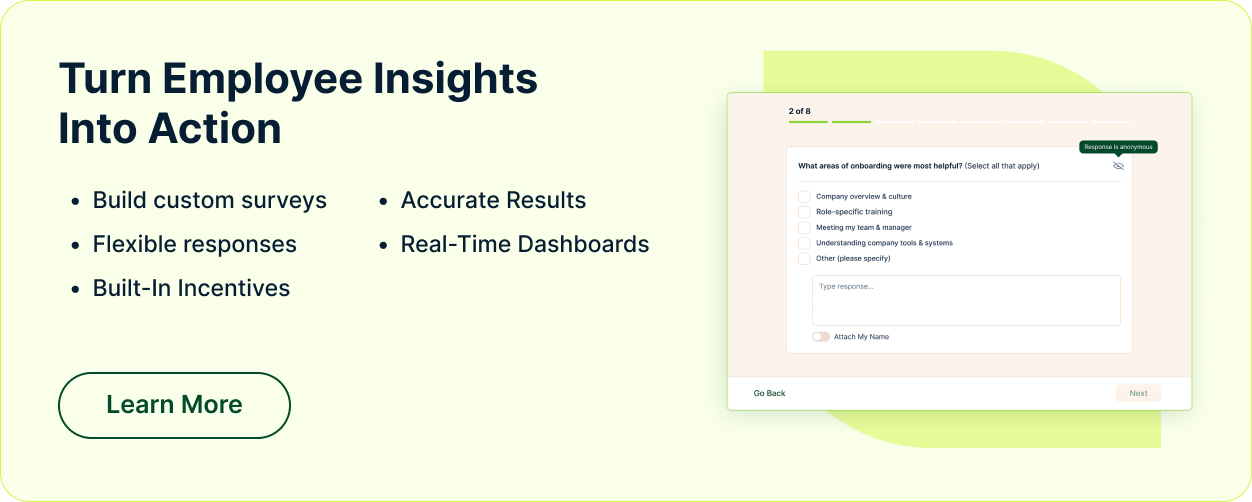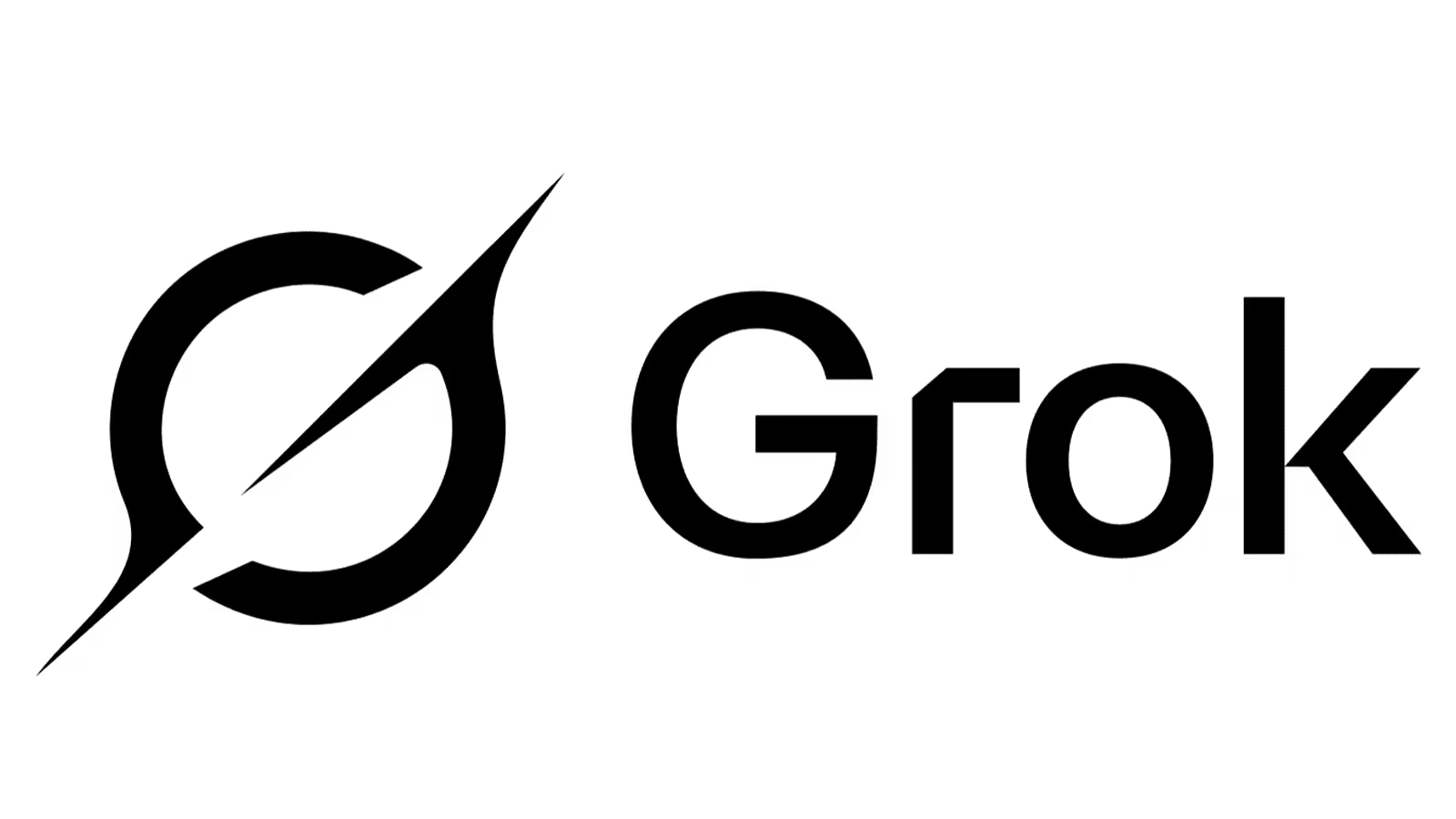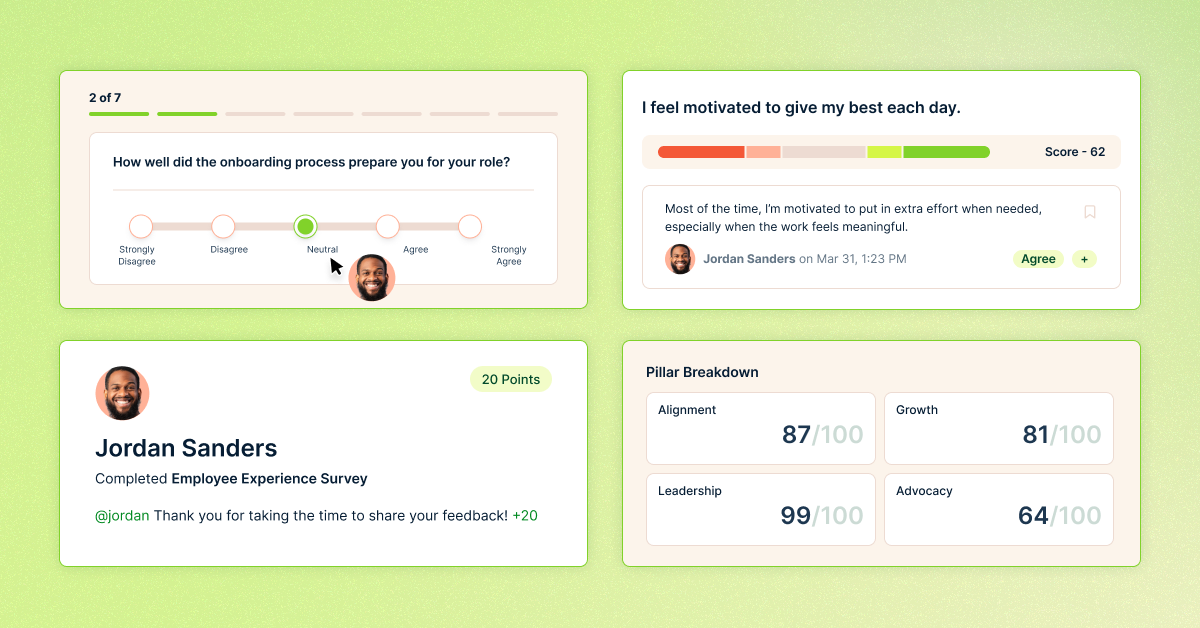How To Use Employee Feedback To Reduce Turnover Costs

Here's the TL;DR
High employee turnover is expensive and widespread—especially in industries like food service and retail, where average tenures are under 29 months. Even leadership roles aren’t immune. While some churn is inevitable, much of it is preventable when companies actively gather and act on employee feedback. This guide outlines how to build an employee feedback system designed to reduce turnover by identifying what employees truly want, need, and expect.
Turnover Costs Add Up Quickly
Replacing an employee can cost 3–4x their salary. Costs include:
- Direct expenses: hiring ads, recruiter fees, onboarding, training, severance, equipment, and temp coverage
- Indirect impact: lost productivity, morale decline, knowledge drain, brand damage, and leadership distraction
How Feedback Reduces Turnover
A strong feedback loop helps companies preemptively fix issues. Best practices include:
- Feedback types: onboarding check-ins, pulse surveys, informal chats, 360 reviews, and stay interviews
- Feedback cadence: mix quarterly surveys, monthly pulses, and weekly check-ins
- Tools & channels: combine anonymous + attributable feedback via digital platforms
- Focus areas: engagement, leadership, culture, DEIB, career growth, and well-being
- Follow-through: categorize insights, assign action owners, track outcomes, and close the loop with staff
Done right, employee feedback becomes a strategic retention tool—and platforms like Nectar help scale that impact.
High employee turnover is both costly and common. In sectors like food service, personal care, and sales, average tenure falls below 29 months—and even management roles don’t fare much better. While some churn is unavoidable, organizations can prevent it when they take employee feedback seriously and commit to understanding what their people want, need, and expect.
This guide will show you how to design an employee feedback system that actively reduces the cost of employee turnover. You’ll learn what to ask, how often to ask it, and, most importantly, what to do with your discoveries. Along the way, we’ll highlight practical tools, retention benchmarks, and expert-backed strategies you can borrow.
What Is The True Cost Of Employee Turnover?
Turnover is part and parcel of the business world, constantly replenishing organizational lineups with fresh perspectives and skills. But while turnover can spark innovation, it also comes with a steep price tag. The cost of losing employees often outweighs the cost of keeping them; In fact, it can take up to six months to break even on the cost of a new hire. Here are some of the costs involved.
Direct Costs
These hard-dollar costs drain your budget in real, measurable ways, including:
- Recruitment expenses: Job board ads, fees for staffing agencies or headhunters, background checks and pre-employment assessments
- Hiring process labor: HR staff time for resume screening, interviews, and processing, plus the time managers spend on interviews
- Onboarding and training costs: Trainer and manager time directly tied to onboarding, plus learning management system (LMS) or external course fees
- Severance and offboarding costs: Administrative processing (e.g., removing access, final paycheck) and COBRA or transitional benefits
- Equipment and setup: New laptop, phone, tools, uniforms, software licenses and IT setup fees
- Temporary coverage: Overtime wages for existing staff covering the role and the cost of hiring temp workers or consultants
Indirect Costs
Indirect costs are harder to quantify. After all, they don’t typically show up on a balance sheet, but they can have a major long-term impact on company performance, morale, and growth. Expect:
- Lost productivity: Output drops while the role remains unfilled, and new hires often take months to reach full efficiency
- Knowledge drain: Departing employees take institutional knowledge, project history, and client context with them
- Team morale and employee engagement: Remaining staff may feel overworked, undervalued, or discouraged, especially if turnover is frequent
- Cultural disruption: Constant exits weaken company culture, disrupt team cohesion, and make integration harder for new hires
- Customer experience risks: Service quality and continuity suffer, especially when client-facing employees leave unexpectedly
- Reputation and employer brand: High turnover damages the company’s reputation internally and externally, making it harder to attract top talent
- Leadership distraction: Managers spend time filling gaps and re-stabilizing teams instead of focusing on strategic growth
Calculator: How To Estimate Your Company’s Turnover Costs
Turnover costs vary significantly depending on your industry, location, and employee type. Take manufacturing, for example, where the average cost of replacing a single skilled frontline worker spans $10,000 to $40,000. In general, though, the Society for Human Resource Management advises that replacement costs are commonly three to four times an employee's annual salary.
But what’s the magic number for every person you replace in your organization? Follow these three simple calculations to find out.
1. Calculate your annual turnover rate
Borrow this formula: Annual turnover rate = Number of employees who left ÷ Average number of employees x 100
Example: If 15 employees left a company with an average headcount of 120:
15 ÷ 120 x 100 = 12.5% turnover rate
2. Estimate your average cost per exit
Use industry benchmarks or calculate your own using categories from the Direct and Indirect Costs sections. Here’s a rough framework to get started:
- Low-complexity roles: $5,000-$10,000 per employee
- Mid-level skilled roles: $15,000-$30,000 per employee
- Executive/specialized roles: Up to 400% of annual salary
3. Multiply to estimate your total annual turnover cost
Here’s another handy formula: Turnover cost = Turnover rate x Average employee count × Estimated cost per exit
Example: Turnover rate of 15% at a company of 100 employees, with an average exit cost of $25,000
0.15 × 100 × 25,000 = $375,000 annually
How To Create An Effective Employee Feedback System
If your eyes are watering at the brutal reality of your turnover costs, you’ll be pleased to hear that listening to the employee voice is an incredibly simple and effective way to bolster your retention efforts. Follow the steps below to design your own employee feedback system.
Decide Which Types Of Feedback Channels To Use
The most resilient organizations use multiple channels to gather insights from different moments in the employee experience. Here's how you can layer feedback management opportunities throughout the employee lifecycle to shape your employee retention strategy.
Onboarding Feedback
New joiners form fast opinions about your company, from how their team greets them to whether they have the kit and access they need to start their job on time. Our research highlights the sensitivity of onboarding, with 29% of workers admitting they've quit a job within 90 days of starting.
Find out what new employees love and loathe about their first few days with your company by conducting structured check-ins at 30, 60, and 90 days. Ask about their expectations vs. reality, team support, and what could have made the transition smoother.
Formal surveys
Formal surveys are the bedrock of most employee feedback strategies. When designed well and used regularly, they can spot trends you’d never notice in one-off conversations or anecdotal input.
Surveys are especially useful for capturing sentiment at scale. They allow you to hear from quieter team members who might not speak up in meetings while generating valuable data to track over time.
Informal check-ins
Not all feedback needs a form. In fact, some of the most honest, actionable insights come from casual conversations. Mark Sanchez, Founder and Real Estate Manager of Tropic Residential, puts it this way:
“I find regular check-ins and individual chats work better than official surveys. Those conversations provide valuable insight to me and the team with an opportunity to express their concerns or ideas in a less formal environment. It builds an atmosphere of openness such that staff have little reluctance to speak up.”
These check-ins are about connection rather than performance reviews or formal metrics. A simple “How are things going?” can spark conversations that reveal simmering signs of disengagement.
Brittany Truszkowski, SHRM-SCP, COO of Grand Canyon Law Group, agrees:
“Some of the most valuable insights don’t come from dashboards. They come from lunch. It’s a habit of mine to take people offsite—no laptops, no whiteboards, just real talk. I say things like, “What’s been challenging recently?” or “What would make work feel 10% better?” The clarity that comes from those simple moments would amaze you.”
Team meetings
Team meetings are an often-overlooked opportunity to invite real-time feedback in a way that feels friendly and collaborative. Carving out space for open discussion during regular meetings normalizes the act of speaking up. It shifts feedback from something that merely happens to employees (like a survey request) to something they're actively part of. It also builds a culture where ideas and concerns are addressed in the moment rather than being hoarded until performance review season.
Loris Petro, Marketing Strategy Lead at Kratom Earth, shares how this plays out in practice:
“We integrate feedback into our regular team meetings instead of relying solely on formal surveys. We encourage employees to share their thoughts in a more casual setting, which helps eliminate any barriers to honest communication. During our monthly check-ins, we create a roundtable where everyone can voice their opinions on anything from work processes to company culture.”
360-degree feedback
While 360-degree feedback is often used as a performance management tool, it's also useful in collecting honest ideas and employee sentiment. Unlike top-down feedback, the 360 approach gathers insights from peers, direct reports, managers, and self-appraisals, resulting in a goldmine of intel to work from.
Stay and exit interviews
Most companies conduct exit interviews with departing employees who feel free to speak their minds and often provide critical feedback you may not get anywhere else. But fewer companies take the time to ask, "What's going right?" That's where stay interviews come in; instead of asking why someone is leaving, you ask what's keeping them around and what might make them consider leaving in the future. These conversations uncover hidden friction points or simple fixes that improve engagement across the board.
Determine The Best Frequency Of Feedback Collection
Once you've bought into the idea of using employee feedback as a powerful tool to reduce turnover, it's tempting to start surveying the heck out of everyone and everything. Beware, though, as there's a fine line between being attentive and annoying.
There’s no one-size-fits-all cadence, but here are a few common options to guide your approach:
- Quarterly engagement surveys: Great for tracking trends and setting strategy across the organization
- Monthly pulse surveys: Shorter check-ins (2-5 questions) to take the temperature on key issues
- Weekly manager check-ins: Ideal for fast-paced teams or during high-change periods
- Annual culture or DEI audits: More comprehensive, reflective surveys suited to slower-moving metrics
One smart example comes from Trina Aguirre, Founder & CEO of Corporate Exit Plan™, who designed her own cadence to address issues before employees reached their breaking point:
“We implemented what I called “pre-exit pulse checks”—private, biannual 1:1 check-ins where employees share what might push them to leave. This helped us reduce turnover and improve morale by making small but strategic changes before people hit their breaking point.”
Weigh Up Anonymous Vs. Attributable Feedback
If you want to use employee feedback to reduce turnover, don’t you need to know who said what? Not necessarily. You can collect two types of employee feedback: anonymous and attributable feedback, each with their merits and drawbacks.
- Anonymous feedback has no identifiable information attached to it, like names, departments, genders, etc. When you invite employees to share their comments anonymously, they may be more willing to share their thoughts in detail without fear of repercussions.
- Attributable feedback doesn’t offer anonymity, but it does enable managers and HR professionals to follow up on any comments that suggest discontent.
The best choice? Use both, as described by Anu Mandapati, CEO of Qultured.
“For sensitive topics, like psychological safety or leadership behavior, we use anonymous tools. But we also build norms where people feel safe naming their feedback in team settings. We coach managers to invite that direct input and reward it with: ‘Thanks for saying that because that helps me lead better.’ When people see feedback leading to change, they’re more willing to attach their names to it next time.”
Rely On Digital Feedback Tools
Collecting, analyzing, and acting on feedback can quickly become a mountainous process, especially in larger organizations. Digital feedback tools ease the burden, with some of the following core features keeping everything streamlined:
- Automated survey scheduling to eliminate the need for manual reminders
- Real-time analytics and dashboards to spot trends, outliers, and hotspots quickly
- Sentiment analysis to detect tone and emotional cues in open-ended responses
- Confidential response options for blending anonymous and attributable feedback
- Integrations with existing HR systems to feed insights directly into performance, engagement, or turnover tracking
Essential Topic Areas To Shape Your Feedback Process
If your goal is to reduce turnover, your employee feedback system should focus on uncovering what really drives people to stay or walk away. That means shaping your questions around key themes directly influencing engagement, satisfaction, and retention.
Employee Engagement
When employees feel engaged, they contribute meaningfully. For this reason, employee engagement is the most common theme (42%) enterprise organizations focus on in their listening programs, according to research from Perceptyx.
To uncover whether people feel connected to their work, ask questions that check if they feel aligned with company goals and empowered to make a difference. Look for dips in energy, ownership, or enthusiasm, which are early signs of disengagement that often precede a resignation.
Work Environment And Culture
Culture shapes everything—from how decisions are made to how comfortable people feel speaking up. The same report finds that 37% of companies prioritize gathering feedback on workplace culture, teamwork, and collaboration.
This focus helps leaders move beyond assumptions and into the realities of daily experience. You might ask:
- Are employees supported by their peers?
- Do they feel safe sharing ideas?
- Is the tone of the workplace one of respect and trust or tension and competition?
Honest answers here often uncover subtle cultural misalignments that directly affect retention.
DEIB (Diversity, Equity, Inclusion & Belonging)
You can tell a lot about a company's culture by who speaks up in meetings and who doesn't, or who's at the table and who's still waiting for an invitation. That's why nearly 37% of organizations actively collect feedback on DEIB.
The goal is to understand whether every employee feels seen, heard, and valued. That might mean asking whether people trust the promotion process or if they feel their ideas carry weight.
Management And Leadership
The uncomfortable truth? People don't usually leave bad jobs; they leave bad managers. In fact, Nectar's research found that 1 in 4 employees would happily replace theirs. Of these, 57% plan to look for work in the next three months.
But "bad" doesn't always mean cruel or careless. Sometimes, it just means inconsistent, unavailable, or misaligned with what employees actually need. That's where collecting feedback about leadership, including direct supervisors and executives, can shed light on blind spots that 360 reviews and top-down assessments often miss. For example, are managers building trust or eroding it? And are expectations clear and communication consistent?
When leadership falters, disengagement is inevitable. But when leadership listens, people tend to stick around.
Career Development Opportunities
88% of organizations are concerned about employee retention, and providing learning opportunities is the top way to hold onto talent, according to LinkedIn's Workplace Learning report.
Employees want clear, visible pathways for progression, whether upskilling, cross-training, or taking on stretch projects. And if they can't grow with you, they'll grow somewhere else.
Use your feedback channels to ask whether team members feel they have room to develop and whether advancement is seen as fair and accessible.
Work-Life Balance And Well-Being
When employees feel overwhelmed or emotionally drained, their engagement naturally plummets, and turnover rises. It's no surprise, then, that 37% of organizations want to understand how employees' work-life balance and well-being drive their decision to stay or go. Some key questions include:
- Are workloads realistic?
- Is time off respected in practice, not just on paper?
- Do people feel like they can set boundaries without consequences?
How To Implement Changes Based On Feedback
Collecting feedback is surprisingly easy, especially if you’re using digital systems. The real work lies in what happens next—how you turn the data into leverage that retains your best people. Here’s how it’s done.
Prioritize Action Items
You can’t tackle everything at once, so follow in the footsteps of Loris Petro, who has “developed a system where every piece of feedback is reviewed and then categorized.”
Start by sorting input into themes: quick wins, systemic issues, and longer-term initiatives. For example, if employees flag broken onboarding processes or unclear career pathways, those fixable and high-impact issues are ideal places to start. Things like pay structure or organizational culture shifts may take longer, but showing you're working on them still builds trust.
Create Action Plans
Don't let feedback disappear into a black hole because, as Mark Sanchez puts it, "When the team sees that change for the better happens because of their suggestions, it reinforces the idea that their opinions mean something."
Here’s how to turn insight into impact:
- Loop in the right stakeholders: Make sure decision-makers and affected teams are involved early
- Assign a clear owner: Every action item needs a person, not just a department
- Set timelines: Define realistic deadlines to keep momentum and prevent delays
- Break it down: Turn vague suggestions into specific, manageable tasks
- Track and share progress: Use tools or dashboards to update the team and show that work is happening.
These small, visible improvements build trust and signal that feedback is part of a long-term retention strategy rather than a reactive fix.
Pair Feedback With Data
Quantitative and qualitative employee feedback is incredibly valuable, but if you're presenting a business case to key stakeholders, it's worth matching insights with HR analytics data. Trina Aguirre explains why:
“Employee feedback is often emotionally driven, and rightfully so. But to earn credibility with leadership, I always pair emotional feedback with operational data. For example, when staff raised concerns about burnout, I pulled overtime and sick leave trends to strengthen the case and push forward policy changes.”
Communicate Changes To Employees
Feedback loses its power if employees never hear what came of it. Closing the loop is just as important as collecting the input in the first place, which you can achieve with these golden rules:
- Be clear about what you’ve heard
- Share what you’re going to act on, including timelines for next steps
- Explain what won’t be changing and why
Not every suggestion can become a priority, but acknowledging it shows respect and prevents silence from breeding cynicism.
3 Best Practices For Feedback Implementation
A feedback program is an important culture-building tool. The difference between those that succeed and those that fizzle out usually boils down to implementation. These best practices ensure the feedback you collect drives employee satisfaction by achieving progress your people can feel.
1. Ensure Confidentiality
If you've promised anonymity, then be sure to honor it. Nothing erodes trust faster than tracing feedback back to individuals without their permission. Even small slip-ups, like referencing a specific comment in a team meeting can make people feel exposed and reluctant to speak up again.
If full anonymity isn’t something you offer, be upfront about that from the start. Transparency builds more trust than false assurances ever could.
2. Create Psychological Safety
Trust comes first. As Kelly Del Fuoco Mota of Pembroke & Co. explains:
“Getting feedback is only possible by first building trust... That may mean showing some vulnerability, being yourself, making honest mistakes, and apologizing.”
When leaders model integrity and openness, employees are more likely to speak honestly. And once they do, follow-through is everything.
3. Maintain Continuous Dialogue
Honest conversation shouldn’t feel like an event. The more natural and ongoing your dialogue becomes, the less likely your people are to walk away without ever saying why.
Recognition plays a big role here, too. According to Nectar, 71% of employees would be less likely to leave their organization if they were recognized more frequently. It's as simple as providing positive feedback to your employees, and acknowledging their effort, progress, and impact in real time.
Track The ROI Of Your Feedback Program
Once your feedback implementation is complete, how can you tell if it’s actually supporting your employee retention strategy?
Key Metrics To Track
Start with clear, measurable indicators that show whether your feedback program is influencing employee retention strategies. Useful metrics include:
- Turnover rate: Monitor voluntary and involuntary exits over time
- Employee engagement scores: Track shifts in how connected and motivated employees feel
- Exit interview trends: Look for recurring themes tied to preventable turnover
- Internal mobility rate: Are more employees moving into new roles instead of leaving?
- Survey participation rates: High response rates signal trust in the process
- Manager follow-through: Track how often action plans are created and completed after feedback implementation
- Recognition frequency: Especially in cultures where feedback ties into appreciation
- Absenteeism and burnout indicators: Use PTO trends, sick leave, and well-being data as early warning signs
Before And After Analysis
Compare key metrics from before and after major feedback initiatives to evaluate impact. Examples include:
- Before: Low onboarding satisfaction
- After: Improved first-90-day retention following onboarding revamp
- Before: Declining engagement in annual surveys
- After: Increased scores after introducing monthly pulse checks
- Before: Frequent complaints about unclear career paths
- After: Higher internal mobility after launching development planning
- Before: Manager-specific turnover spikes
- After: Improved retention post-leadership coaching
- Before: Low participation in DEIB initiatives
- After: Higher inclusion scores and engagement after targeted feedback sessions
- Before: High absenteeism and burnout-related PTO
- After: Reduced absenteeism following workload and well-being changes
Long-Term Impact Assessment
Not all progress is instant. Some of the most meaningful improvements, like culture shifts or leadership trust, build over quarters, not weeks. Asking consistent questions in your surveys and check-ins will help you monitor trends rather than just reactions.
Here are a few examples of questions worth repeating regularly:
- “I feel valued for the work I do” — tracks recognition, morale, and engagement over time
- “I can see a clear path for career growth within this organization” — reveals long-term perceptions of development opportunities
- “I trust my manager to support me when issues arise” — reflects relationship quality and leadership effectiveness
- “I feel comfortable speaking up or sharing concerns” — monitors psychological safety and cultural openness
- “I see the company acting on employee feedback” — tests whether your implementation efforts are visible and credible
- “I would recommend this organization as a great place to work” — is a strong catch-all for overall sentiment and loyalty
Share Feedback And Appreciation With Nectar
Reducing the cost of employee turnover starts with listening, but lasting retention is built on what you do next. That’s where Nectar comes in.
Nectar is a recognition and internal communications platform that helps organizations create high-trust, high-retention cultures through meaningful feedback, real-time appreciation, and seamless communication. From peer-to-peer shoutouts to leadership messaging, Nectar empowers teams to feel seen, heard, and valued every day, so they have no reason to jump ship.
If you're ready to turn employee feedback into lasting engagement, why not book a free demo of our platform? Meanwhile, you can stay in the loop with fresh insights on retention, recognition, and culture by signing up for our newsletter.















